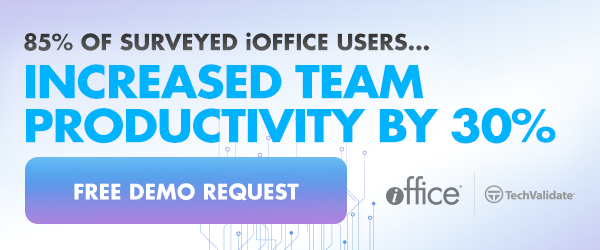How to Make The Business Case For An IWMS


The new year is still a few months away, but that doesn’t mean you can’t start thinking about your resolutions. Now is as good a time as ever to think about how to enhance your workplace and improve the employee experience. And in doing your research, you’ve concluded that one of the best ways to start is to implement an integrated workplace management system (IWMS). You already know it will make your job easier, but your boss may not be convinced just yet.
Here are three ways to build the business case for an IWMS.
We Can Save Thousands With Better Space Management
A single unused workspace can cost your organization up to $18,000 each year.
That’s just the cost of one space being vacant. If your organization is large enough, it’s likely you have dozens of unused spaces. Even if you just have 10, that’s $180,000 a year. And that’s only accounting for spaces that are clearly not in use. There are likely many more that are underutilized. For instance, if you have one employee who works from home twice a week, you’re paying more than $7,700 for their desk to sit empty.
An IWMS provides your organization with the real-time space management data you need to make better decisions about how to manage your real estate. It may seem like your company is outgrowing its current office when in reality, the space is poorly designed or managed. As a result, employees end up all using the same spaces, making the office feel crowded. An IWMS allows you to make decisions based on objective space utilization metrics, rather than anecdotal evidence.
It also gives your employees the tools they need to reserve rooms and workstations so you can make better use of the space you have.
Recommended: What Are the Benefits of An IWMS In the Modern Workplace?
We’ll Reduce Energy and Maintenance Costs
According to FM BENCHMARKING, an online facilities management and corporate real estate (CRE) benchmarking tool, utilities account for nearly 40 percent of all operating costs for an office building. That means if a facility’s HVAC and/or lighting system aren’t running at an optimal level or aren’t being utilized efficiently, your company could be wasting thousands of dollars each month.
Asset management software enables facilities managers to not only better manage scheduled asset maintenance but also execute predictive maintenance. Predictive maintenance helps organizations save money by proactively repairing assets based on actual utilization rather than relying on the manufacturer’s recommended repair schedule. This prevents unexpected and expensive equipment failures.
The insight into actual asset utilization provided by asset management software and IoT sensors also lets FMs identify opportunities to increase the efficiency and cost-effectiveness of expensive assets, like HVAC and lighting systems. FMs can make data-driven decisions based on their facility’s specific utilization, rather than relying solely on industry averages.
We’ll Improve The Employee Experience
The employee experience isn’t just a feel-good buzzword. It has a direct impact on your bottom line.
Research by Jacob Morgan notes that companies that invest in the employee experience are four times as profitable as those that don’t and have more than two times the average revenue. In addition, they had lower employee turnover and lower customer churn rates.
So what does an IWMS have to do with the employee experience?
When an IWMS is paired with workplace apps that allow employees to make requests, it becomes part of a closed loop that adds continuous value for employees and workplace leaders.
For instance:
- Most employees aren’t looking at space management data, but they do want to work in well-designed office where it’s easy to reserve rooms and equipment.
- Most employees don’t think much about service requests—until their chair is broken or their computer stops working.
- Most employees don’t think much about mailroom management—until they have an important package arriving.
As employees make requests, workplace leaders can make adjustments in real time and over a longer period of time as they notice trends.
In order to create a workplace that inspires creativity and supports productivity, you need to invest in employee experience software and the technology that powers it—an IWMS.
To learn more about what to look for and how to compare IWMS software, check out our Ultimate IWMS Buyer’s Guide.
